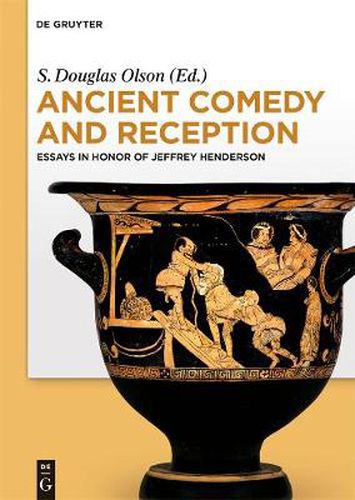Readings Newsletter
Become a Readings Member to make your shopping experience even easier.
Sign in or sign up for free!
You’re not far away from qualifying for FREE standard shipping within Australia
You’ve qualified for FREE standard shipping within Australia
The cart is loading…






This wide-ranging collection, consisting of 50 essays by leading international scholars in a variety of fields, provides an overview of the reception history of a major literary genre from Greco-Roman antiquity to the present day. Section I considers how the 5th- and 4th-century Athenian comic poets defined themselves and their plays, especially in relation to other major literary forms. It then moves on to the Roman world and to the reception of Greek comedy there in art and literature. Section II deals with the European reception of Greek and Roman comedy in the Medieval, Renaissance, and Early Modern periods, and with the European stage tradition of comic theater more generally. Section III treats the handling of Greco-Roman comedy in the modern world, with attention not just to literary translations and stage-productions, but to more modern media such as radio and film. The collection will be of interest to students of ancient comedy as well as toall those concerned with how literary and theatrical traditions are passed on from one time and place to another, and adapted to meet local conditions and concerns.
$9.00 standard shipping within Australia
FREE standard shipping within Australia for orders over $100.00
Express & International shipping calculated at checkout
This wide-ranging collection, consisting of 50 essays by leading international scholars in a variety of fields, provides an overview of the reception history of a major literary genre from Greco-Roman antiquity to the present day. Section I considers how the 5th- and 4th-century Athenian comic poets defined themselves and their plays, especially in relation to other major literary forms. It then moves on to the Roman world and to the reception of Greek comedy there in art and literature. Section II deals with the European reception of Greek and Roman comedy in the Medieval, Renaissance, and Early Modern periods, and with the European stage tradition of comic theater more generally. Section III treats the handling of Greco-Roman comedy in the modern world, with attention not just to literary translations and stage-productions, but to more modern media such as radio and film. The collection will be of interest to students of ancient comedy as well as toall those concerned with how literary and theatrical traditions are passed on from one time and place to another, and adapted to meet local conditions and concerns.